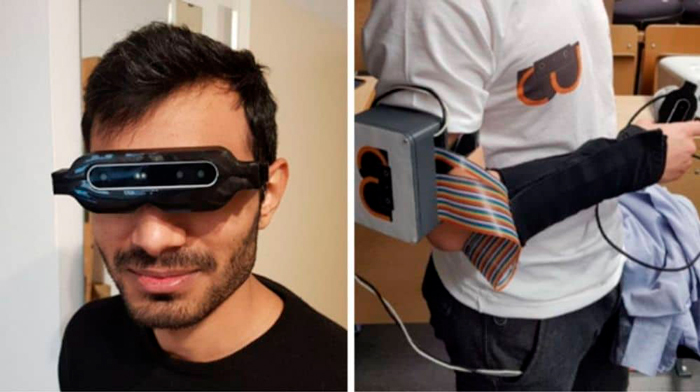Engineers from the Technical University of Munich have developed an efficient navigation system for blind and visually impaired people. The invention consists of two elements. First, it’s a pair of 3D printed glasses. Similar to motion tracking systems in VR headsets, they use cameras to record a stereoscopic image of the environment to build a 3D map.
The researchers used an Intel RealSense D415 camera that captures infrared light, allowing the system to operate at night and generate a 3D image at 1280×720 resolution and up to 90 frames per second. The system was tested with a resolution of 640×480 at 6 frames to improve computational performance.
The data about the obstacles surrounding the user are transmitted to a special sleeve with a vibration lining, which ensures the transmission of information about the presence of an obstacle using tactile communication. The vibration intensity indicates the distance to the obstacle. The sleeve area is divided into 25 sectors (5×5), each of which has an independent vibration drive. The use of infrared cameras significantly increases the accuracy and sensitivity of the system compared to ultrasonic sensors.
The system has two modes of operation: indoors with a maximum detection range of three meters and outdoors with a minimum detection range of two meters to detect obstacles in the distance. Thus, the device can work in addition to a cane.
Volunteers who tested the system were able to navigate correctly 98.6% of the time with just one of the motors vibrating, and up to 70% of the time in more difficult situations with multiple tactile feedback. The researchers intend to continue to improve their invention and hope to tweak the object recognition engine to generate routes to help navigate open spaces.


